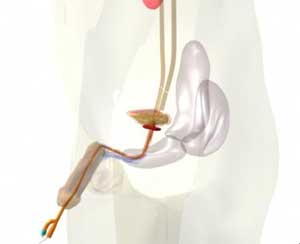Q: What is a sphincterotomy?
A: Bladder outlet surgery is known as a sphincterotomy.
A small scope is passed into the urethra so that the bottom of the bladder can be seen.
Then cuts are made by an urologist in the muscular valve surrounding the urethra.
After this whenever the bladder contracts urine passes without obstruction out of the bladder.
Q: Would I have to stay in the hospital after this surgery?
A: The operation is often done as an outpatient and carries a very low risk of complications.
Usually a person wears an indwelling (foley) catheter for about a week to allow the surgical site to heal.
When it is removed the bladder again empties on its own.
Q: Are there any complications with a sphincterotomy?
A: One complication, for men, is that fertility is affected by this operation as any sperm from an ejaculation ends up in the bladder, rather than coming out of the penis.
This doesn�t eliminate the possibility of having a child, but it does lower it as the urine in the bladder can damage the sperm.
There are other more expensive approaches to fertility that can get around this problem such as in vitro fertilization.
They are however expensive and frequently not covered by insurance.
The sphincterotomy surgery is generally felt to be irreversible although occasionally the muscle grows back and the surgery needs to be repeated.
Q: What kind of bladder techniques could I use after a sphincterotomy?
A: Following this operation it is generally not possible to change to intermittent catheterization and a bladder stimulator will generally not work, though this may not always be the case.
For women the choice would be between an indwelling catheter or continence pads.
Men will generally use an external collector device.





